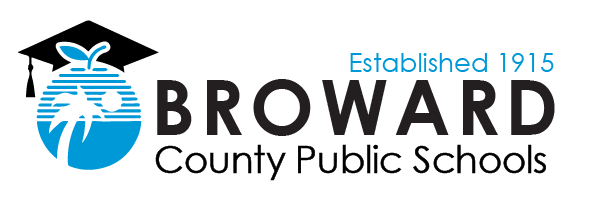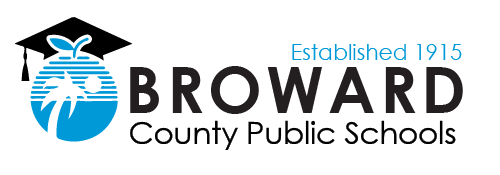FREQUENTLY ASKED QUESTIONS
Policy 3330 Supplier Diversity Outreach Program includes narrowly tailored Affirmative Procurement Initiatives (APIs) designed to increase availability and contract participation by Small/Minority/Women Business Enterprises (S/M/WBEs).
Firms Certified as S/M/WBE by Broward County Public School may receive preference in solicitations through goal setting. In addition, contracts may include specified S/M/WBE subcontractor/subconsultant goals.
Policy 3330 Supplier Diversity Outreach Program requires a Significant Business Presence in the Tri-County market area:
Palm Beach County, Broward County, and Miami-Dade County.
The size standard criteria is based on the U.S. Small Business Administration Table of Small Business Size Standards.
Register as a supplier through the eProcure Online Supplier Portal
Current solicitations and addendums may be downloaded from Demandstar at www.demandstar.com.
The Florida Constitution allows a governing body — in this case, the School Board of Broward County, Florida — to go directly to Broward County’s voters with a referendum to obtain approval for a clearly specified reason. A bond referendum is an opportunity for county taxpayers to decide if the District can borrow money through the sale of a bond to finance capital projects for school safety projects, repairs and renovations to facilities and improvements to technology infrastructure. Voters approved the Bond on November 4, 2014.
Bids must be delivered directly to Procurement and Warehousing Services prior to the due date stipulated on the solicitation. Bids are not accepted electronically. Hard copy responses must be sent to the following address:
Procurement and Warehousing Services
7720 West Oakland Park Blvd. Suite 323
Sunrise, FL 33331
A project closeout follows the steps below:
- Substantial completion: Substantial Completion is the point in which, the work or designated portion thereof, is at a level of completion in compliance with the contract documents such that the Owner can use or occupy the area of/or the building for its intended purpose. The project consultant certifies the project at Substantial Completion, followed by the Building Department certifying the Substantial Completion, thereby giving the Certificate of Occupancy (110b).
- Financial completion: Final Completion is the milestone following Substantial Completion at which time all of the work has been completed in accordance with the contract documents as certified by the project consultant. This phase requires all punch list items are complete, all change orders are complete, and all required documentation has been submitted and approved. The project consultant certifies the project at final completion, followed by the Building Department certifying the Final Completion, thereby giving the Certificate of Completion (209).
- Financial Closeout: This is the point of the project where vendors have completed all work, all commitments have been paid and purchase orders are closed following the School Board approval of the final release of retainage and final acceptance of the project.
- Closed: This is the point when Capital Budget transfers any funds remaining to Capital Reserve through a Capital Fund Amendment.
GOB stands for General Obligation Bond, which is the funding voted on by the residents of Broward County to provide $800 Million of critically needed funding to 232 Broward County Public Schools.
The school district has insurance to cover any damage incurred.
Based on the current schedule, the program is expected to be completed late 2025.
Individual school pages are routinely updated with the latest information about its SMART renovation projects. You can search for a school by going to the navigation bar at the top of the page and clicking ‘FIND YOUR SCHOOL’ or by going to the homepage and typing the school name into the search bar.
Go to the navigation bar at the top of the page and click ‘CONTACT’, then fill out the required fields and click submit. Inquiries will be sent to smartfutures@browardschools.com and you will receive a response within 48 hours.
- As part of AECOM’s transition as Program Manager/Owner’s Representative (PMOR) of the SMART Program, a comprehensive evaluation of the Program was performed, and it was determined that the 2018 schedule for the completion of all construction projects was statistically improbable. Under the 2018 schedule, nearly all projects had been flagged and deemed at risk of schedule delays with potential budget impacts.
- A revised schedule (2020) was approved by the School Board. AECOM’s goal is to re-establish reasonable expectations based on the reality of the program today. Under the new schedule, the SMART Program is on schedule to reach substantial-completion by October 2025.
• A: In May 2008, the Florida Legislature reduced the tax on property values that provides capital revenues for school districts to address facility and equipment needs. The property tax rate went from $2 per $1,000 of taxable value to $1.75. In 2009, the Legislature further reduced the tax rate by another 25 cents, to $1.50 per $1,000 of taxable value.
The loss of revenue forced Broward County Public Schools to cut $1.8 billion in capital projects for renovations, new construction and the purchase of equipment for schools and District facilities. Our District has joined other Florida school districts to ask state lawmakers to restore the capital millage. To date, those efforts have been unsuccessful. In response to the Legislature’s actions, the District developed the SMART Program and initiated the Bond referendum to pay for it.
Forty percent of the District’s school buildings are over 25 years old, and the average age is 27 years old. Just as in homes, roofs, air conditioners, electrical systems, and plumbing have a limited life span and are in need of repair or replacement. The SMART Program addresses the following critical areas:
- Improvements to support student health, safety and
- Computer devices and technology infrastructure improvements to support student learning, digital-based media environments and 21st century classroom instruction.
- Facility repair, renovation and replacement to ensure quality schools.
- The SMART Program is needed. The District’s current 5-year District Educational Facilities Plan (capital budget) was amended to include SMART Program funding for critical facilities projects and for new equipment to support digital education, music, arts and athletics.
- No. Bond referendums are typically used by school districts to raise revenue for capital improvement projects. Thirty-three (33) other school districts in Florida, including Miami-Dade and Palm Beach counties, sought voter approval to use either Operating Millage, a portion of Local Government Infrastructure Sales Surtax or the School Capital Outlay Surtax to pay for needed capital improvement projects.
- Bond funds cannot be used for salaries or operating costs. Bond funds can only be used for capital projects, such as repair and renovations to existing facilities, or for the purchase of equipment, ranging from computer devices and musical instruments to heating, ventilation and air conditioning units.
- The Broward County Public Schools used a nationally renowned firm to conduct an independent needs assessment of all schools and facilities, and that study identified approximately $3 billion in capital needs. The Bond raised $800 million, which only covers a portion of the District’s capital projects. The SMART Program is a responsible start that secures funding to address our most critical needs in a way that won’t overburden county taxpayers.
- A homeowner in Broward County, whose home is valued at $225,000, will see an average increase in their capital outlay tax of $50.00 per year over the life of the bond. It is a modest increase, but the tax is still roughly $127.00 less per year than it was in 2007. This means the homeowner will pay approximately 26 percent less in capital outlay taxes than seven years ago. For a condominium owner whose condo is valued at $105,000, the capital outlay tax will increase by $20.00 per year over the life of the bond, which is still approximately $72.00 less per year than it was in 2007, amounting to a 33 percent reduction than seven years ago.
- No. Not directly. It’s the property owner who gets the tax bill and is obligated to pay it. However, property owners include tax payments along with other expenses in calculating how much rent to charge their tenants.
- In 2015, the District created the Bond Oversight Committee (BOC), an independent panel that reviews and reports on all SMART Program related expenditures. The purpose of the BOC is to build trust with our community and ensure accountability, integrity and transparency throughout the SMART Program BOC meetings are open to the public. For further information, please visit http://www.broward.k12.fl.us/ospa/smart-calendar/.
Facilities projects involve repair, replacement and renovations to structures and their various components. This includes work on building exteriors, electrical systems, fire alarms and fire sprinklers, heating, ventilation and air conditioning units, plumbing, walls and windows.
A majority of these projects go through a six-phase process, beginning with initial planning by the District’s Office of Facilities and Construction (OF&C). Phase 2 involves advertising and hiring architects or engineers to design the project. In Phase 3, the design professionals draw up plans for the contractors or vendors who are hired in Phase 4. The actual work starts Phase 5 and once that is completed, the project undergoes quality assurance inspections in the final Phase 6.
Other projects may undergo an alternative process aimed at expediting the work, such as bringing contractors and the design team together in a collaborative effort to complete the project.
Yes. Every school will receive $100,000 under the SMART’s School Choice Enhancement Program (SCEP). The funding allows each school to decide on how to best use the funding to improve educational and instructional spaces. Participating schools have used SCEP to renovate playgrounds, add needed furniture and install new monitors, speakers and outdoor marquees.
The SMART Program includes funding for Art, Music and Athletic facilities.
Athletic improvements include the renovation of racing tracks at several schools throughout the District, and the School District has recently selected vendors to start work on upgrading weight rooms in high school gyms.
Music programs have also benefited from a School Board decision to accelerate funding for new instruments and related equipment. Schools are now seeing their musical needs being met earlier than originally planned.
Thanks to the Board’s decision to move Bond funding to the District’s capital budget, District staff can now upgrade and replace music, art and athletic equipment for schools that have programmatic needs. Examples include:
• Replacement of music equipment
• Sound and acoustic treatments
• Studio/audio enhancements
• Theater lighting
• Music/art cabinets and secure storage
• Kiln replacement
• Athletic equipment
The District, like many others across the country, is adjusting to a changing learning environment as more and more instructional materials move from print to digital formats. To keep up, the SMART Program has set aside $80 million in funding for Technology to improve wireless access points and network equipment, purchase approximately 83,362 new computer devices and train teachers to use new computer technology for their students.
Single Point of Entry projects (SPEs) involve the repairs or installation of a school’s primary access and typically consist of improvements to fencing and gates to secure campuses during normal school hours. SPE projects that were scheduled to start in the latter years of the SMART Program were moved into the current year for more timely construction and completion.
Assessments are done to evaluate risks that could impact the value of a project, and they are fairly common tools in long-term construction projects. The District hired Atkins to provide annual risk assessments — the financial analysis and budgetary oversight — of all SMART Program projects.
How is information concerning the status of SMART Program projects being disseminated to the public?
- There are several ways the public can find the status of SMART Program projects. The public can review each schools project status by visiting the individual school page or District/Municipal spotlight report. To view these reports, please visit: https://bcpssmartfutures.com/school-spotlight-reports/
- The District also provides regular updates on the SMART Program to city officials, business groups and community organizations
Yes. The District has modified its procurement policies to bring more local small businesses into the SMART Program as contractors and vendors. School District contracts are vehicles that stimulate job growth and boost the local economy.
The District is committed to promoting and developing business relationships with small, minority-owned, women-owned, and locally owned businesses and encourages their participation in the procurement process.
Strong public education is the foundation of our country. Excellent schools support a vibrant community and economy, and ensure a well-educated and highly skilled workforce that attracts and retains businesses.
School facility renovations generate jobs and grow our local tax base. When schools are improved, this adds value and benefits the community as a whole.


